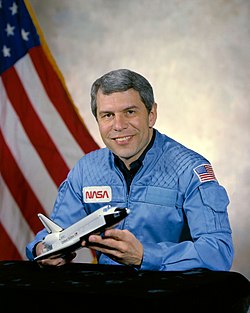Robert Parker | |
|---|---|
 | |
| Born | Robert Allan Ridley Parker December 14, 1936 New York City, New York, U.S. |
| Education | Amherst College (BS) California Institute of Technology (MS, PhD) |
| Space career | |
| NASA astronaut | |
Time in space | 19d 6h 52m |
| Selection | NASA Group 6 (1967) |
| Missions | STS-9 STS-35 |
Mission insignia |   |
| Retirement | August 31, 2005 |
| Scientific career | |
| Fields | Physics Astronomy |
| Thesis | The Physical Conditions Pertaining to Some Possible Supernova Remnants (1963) |
| Doctoral advisor | Guido Münch |
Robert Allan Ridley Parker (born December 14, 1936) is an American physicist and astronomer, former director of the NASA Management Office at the Jet Propulsion Laboratory, and a retired NASA astronaut. He was a mission specialist on two Space Shuttle missions, STS-9 and STS-35.
Contents
- Biography
- Early life
- NASA career
- Post-NASA career
- Personal life
- Honors and memberships
- Media
- References
He has logged over 3,500 hours flying time in jet aircraft and 463 hours in space. [1]
